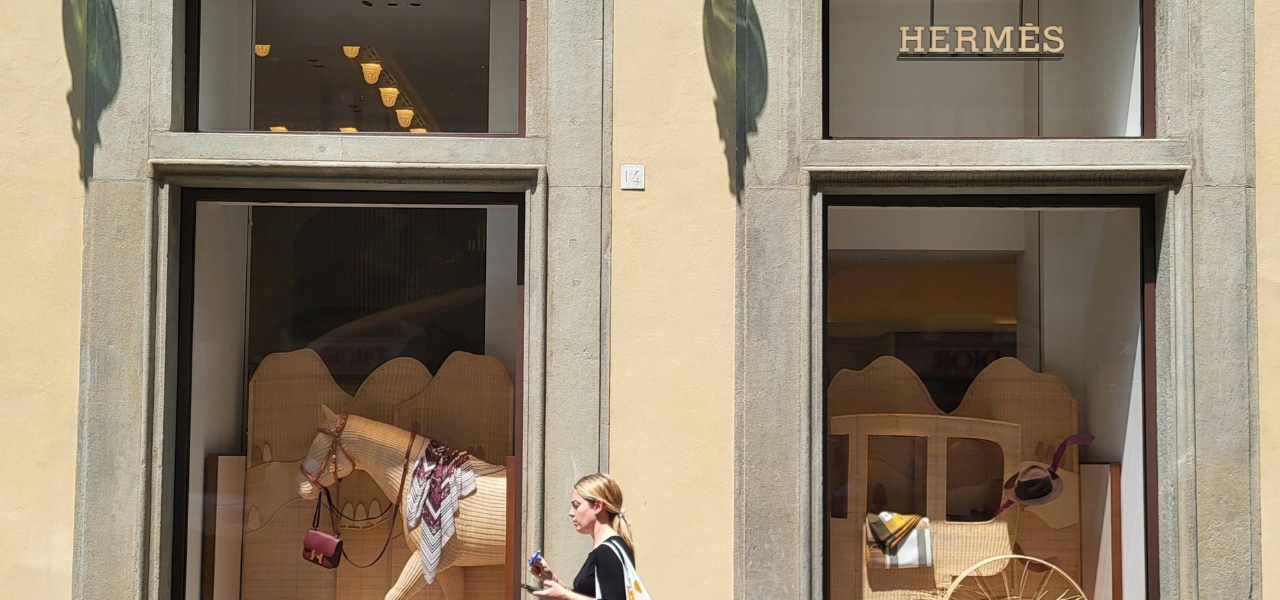When we think about digital transformation, we often imagine companies racing to become more accessible, more transparent, and more democratic. But luxury brands? They’re playing an entirely different game. While most businesses use technology to reach broader audiences, luxury brands are wielding digital tools like velvet ropes, creating new forms of exclusivity that would make their traditional gatekeepers proud.
The irony is striking. In an age where technology supposedly democratizes everything, luxury houses have found ways to make their products feel even more unattainable.
Private Digital Worlds Behind Closed Doors
Hermès doesn’t just sell handbags online like everyone else. Instead, they’ve created invitation-only digital experiences that make their physical boutiques look accessible. Select customers receive private links to virtual showrooms where they can preview collections months before public release. These are immersive experiences complete with personal stylists available via video chat and exclusive content about the craftsmanship behind each piece.
Louis Vuitton has taken this further with their “Circle of Trust” digital platform. Members don’t just get early access to products; they get access to artisans via live streams, behind-the-scenes content from fashion weeks, and even virtual meetings with brand executives. The waiting list to join? Often longer than the waiting list for their most coveted handbags.
AI-Powered Exclusivity Algorithms
Here’s where it gets really interesting. Luxury brands are using artificial intelligence not to recommend products to everyone, but to identify who shouldn’t have access to certain items. Sophisticated algorithms analyze purchase history, social media presence, and even browsing patterns to determine a customer’s “luxury quotient.”
Rolex, for instance, has developed internal systems that can predict which customers are likely to flip their watches on the resale market. Those customers mysteriously find themselves unable to purchase certain limited editions, while others receive personal invitations to view new collections. The algorithm also tracks how you behave after you buy it.
The Scarcity Amplification Engine
Traditional luxury relied on limited production runs and exclusive materials. Digital luxury amplifies this scarcity through sophisticated supply chain management and predictive analytics. Brands can now create artificial scarcity that feels completely natural.
Chanel uses real-time demand monitoring to adjust availability across their global boutiques. If a particular handbag is selling too quickly in one region, the system automatically reduces allocation to other markets, maintaining the perception that the item is genuinely rare. Customers in different cities might see completely different availability for the same product, all orchestrated by algorithms designed to maintain desire through scarcity.
Blockchain Authentication Creates New Hierarchies
While many industries use blockchain for transparency, luxury brands use it to create new forms of exclusivity. Digital certificates of authenticity create a hierarchy of ownership history.
A Bulgari watch doesn’t just come with proof of authenticity; it comes with a digital passport that tracks its journey from creation to current owner. But here’s the twist: the blockchain also assigns “prestige scores” based on previous owners, purchase location, and how the item was acquired. A watch previously owned by a celebrity or purchased at a flagship store carries higher digital prestige than the same model bought through a secondary retailer.
Also read: Why Your Employees Are Sabotaging Your Digital Transformation (And How to Fix It)
The Future of Invisible Exclusivity
The most sophisticated luxury brands are moving toward what insiders call “invisible exclusivity.” Customers don’t even realize they’re being filtered and sorted. Your digital interactions with the brand, from website browsing patterns to social media engagement, create an invisible profile that determines what you’re allowed to see and buy.
This isn’t the democratization of luxury through digital transformation; it’s the evolution of exclusivity for the digital age. These brands have discovered something remarkable: in a world where everything feels accessible, true luxury lies in maintaining the illusion of scarcity while using technology to enforce it more effectively than ever before.
Tags:
Artificial IntelligenceTechnology TrendsAuthor - Jijo George
Jijo is an enthusiastic fresh voice in the blogging world, passionate about exploring and sharing insights on a variety of topics ranging from business to tech. He brings a unique perspective that blends academic knowledge with a curious and open-minded approach to life.
